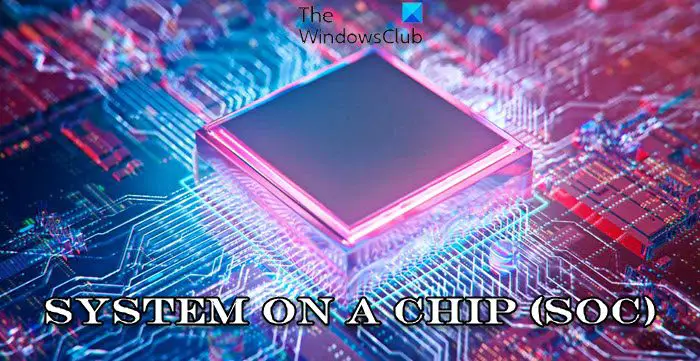Do you know what’s inside of your smartphone or tablet? It’s home to an SoC, also known as System on a Chip. It’s quite powerful, more so than any desktop CPU in the 90s or early 2000s, which goes to show how far technology has come since then. These tiny, yet powerful chips, are surprisingly very power efficient and get even more so as time goes on. They are the reason why smartphones nowadays can play video games with high-quality graphics and even perform basic video editing in quick succession.

What is a System on a Chip (SoC)
As stated above, the term SoC means System on a Chip. This is the name given due to the integration of several computing components all fitted onto a single chip. So far, SoCs, because of their small size, are mainly used for mobile devices.
Which company created the first SoC?
Back in the year 1974, the folks at Intel released a digital watch called Microma Digital Watch, and from what we’ve gathered, it is the first commercial device to have an SoC inside. Fast forward to the 1990s and several mobile phones have an SoC inside, but these tiny chips really took off with the advent of the smartphone.
What does an SoC comprise of?
Because smartphones and tablets are quite small, all the essential components needed to be on a single die, and that’s SoC how the SoC came to life. Unlike a typical home computer, there isn’t a motherboard with components all over the place because designers had to save space. SoC is an integrated circuit that combines different functions of a computer system into a single chip.
- Central Processing Unit (CPU) Believe it or not, the CPU is one of the primary components found on an SoC. It deals with the primary processing tasks, which is quite similar to the brain if you think about it.
- Graphics Processing Unit (GPU) A smartphone cannot function without a GPU. Yes, the CPU is powerful enough to perform all operations, but it’s not enough, hence why the GPU is needed to offset some of the load. Everything you see on your screen is processed by the GPU.
- Image Processing Unit (IPU) If your smartphone has a camera, then chances are it’s powered by an IPU. The imaging data is processed by the IPU after being sent to the SoC, and from there, the CPU takes over to handle other tasks relating.
- Random Access Memory (RAM) The RAM is important for all forms of computers, not just smartphones. For persons who use a lot of applications on their devices, the RAM is there to store app data to make it faster to open your favorite apps whenever you want.
As it stands right now, SoCs are no longer exclusive to small-form computers. The Apple M1 chip is proof of this as several of the company’s newest computers are powered by it. And from what reviewers are saying, the M1 chip is quite the powerhouse.
Chances are, the System on a Chip technology is the future of commercial and business computing, and that’s something we can get behind.
System on a Chip examples
You will tend to find System on a Chip hardware in embedded systems such as smartphones, tablets, and devices used for the Internet of Things, to name a few. This setup is different from the traditional motherboard-based PC architecture we’ve come accustomed to over the many decades.
What is Intel System on a Chip?
Intel has its own form of SoC, and it is called the Intel NUC, or Next Unit of Computing. From what we have seen, NUCs are small form computers that are quite capable for their size.
Read: Chipsets and Motherboards that support Windows 11 operating system.